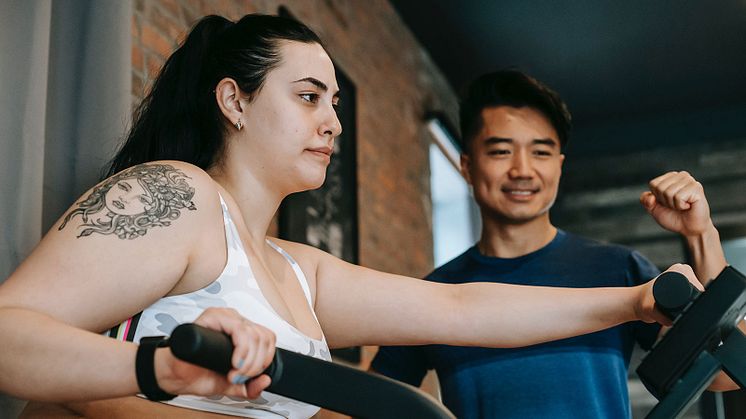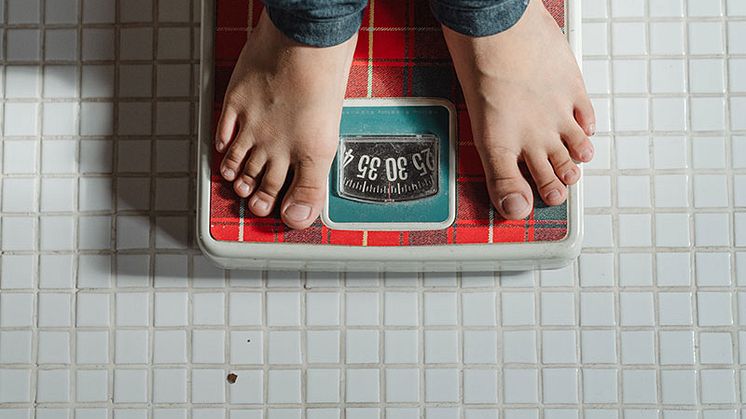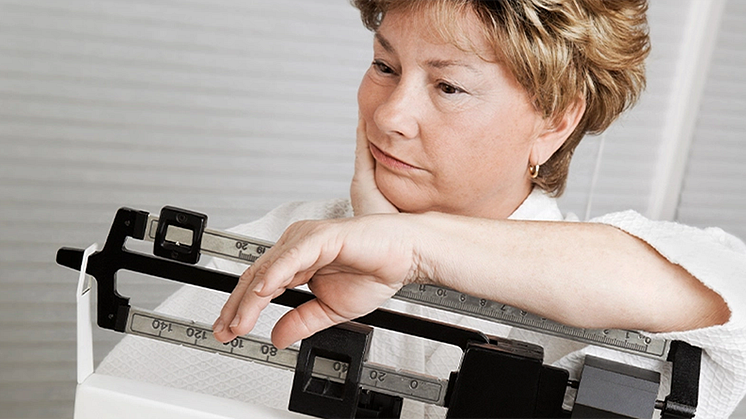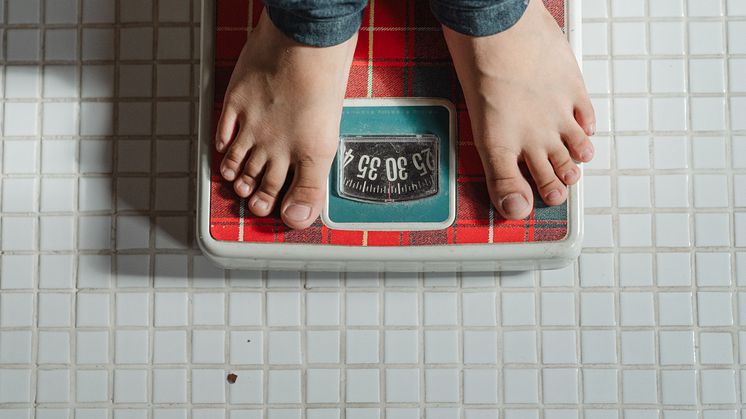
Blog post -
Difference Between Post-Holiday Weight Gain & Fat Gain? Here’s What’s More Concerning
The travel bug has bitten us all, and there’s no denying the thrill of exploring new destinations and immersing ourselves in different cultures.
However, after the adventure ends and we find ourselves back home, a not-so-welcome souvenir may have tagged along: a few extra kilograms that greet us on the weighing scale. While you’re glad to have indulged in local delicacies, you’re probably looking for ways on how to lose holiday weight gain.
But do we really have to worry about holiday weight gain?
Holiday weight gain is a worldwide phenomenon

Travel periods and holiday seasons are often filled with festivities and merriment, but research suggests that those cherished months from late November to early January can be a perilous time for our waistlines.
It’s reported that adults, regardless of their weight loss aspirations or meticulous food tracking, are not so fortunate when it comes to post-holiday weight gain. Numerous studies have unveiled the undeniable truth—adults tend to pack on a little extra during the holiday season.
On average, it’s estimated that we gain around 0.37 kg during this joyful period. But here’s the kicker: this weight tends to stick around long after the holiday decorations have been packed away, contributing to the ever-increasing numbers on our scales as we journey through adulthood.
To uncover the international allure of holiday weight gain, an intrepid team of researchers set out on a global expedition. They targeted participants celebrating Thanksgiving in the United States, Easter in Germany, and Golden Week in Japan, along with the universally beloved Christmas celebration.
They discovered that holiday weight gain transcended borders, affecting revellers across the globe!
With 2,924 adults in their 40s as their trusty travel companions, armed with “smart scales” and a mission to unlock the secrets of holiday weight gain, the researchers embarked on their study. Day after day, the participants diligently recorded their weights. The results were eye-opening.
In all three countries, participants noticed a fascinating pattern. Ten days after Christmas, their weights hovered around a jolly 0.5% higher. It’s as if those extra helpings of holiday cheer had left a lasting mark on their scales.
The volunteers gained an average of 0.2% to 0.3% during these celebrations, proving that holiday weight gain is a persistent traveller, never missing a chance to leave its mark.
What’s the difference between weight gain and fat gain?

Weight gain occurs when you consume more calories than you burn, resulting in an accumulation of excess energy that is stored in the body as fat. This excess fat is stored within fat cells, either by enlarging the existing cells or creating new ones.
Several factors contribute to unintentional weight gain, such as poor sleep, a sedentary lifestyle, and consuming processed or sugary foods. However, adopting mindful eating habits, engaging in regular exercise, and focusing on whole foods can help you achieve your weight loss goals and improve overall health.
While lifestyle factors play a significant role in weight gain, certain medical conditions can also contribute to the problem. If you have been following a nutritious diet and exercising regularly but still struggle to lose weight, it may be worth consulting a healthcare professional to rule out any underlying medical conditions.
On the other hand, fat gain refers to the increase in the size and number of fat cells within the body. The number of fat cells tends to stabilise during adolescence and adulthood unless significant weight fluctuations occur.
Consuming excessive calories over a prolonged period can cause the existing fat cells to expand and new ones to develop. These enlarged fat cells become resistant to insulin, increasing the risk of Type II diabetes and cardiovascular disease.
Fat tends to accumulate primarily as subcutaneous fat, which is the fat located just beneath the skin’s surface around the waist, hips, upper back, buttocks, and thighs. Excessive subcutaneous fat may pose health risks but to a lesser extent than visceral fat.
Ahead, we’ll share our tips on how to lose holiday weight gain and keep it off for good.
How to lose holiday weight gain consistently without excessive loose skin

There’s a not-so-flattering side effect that often tags along with an awe-inspiring weight loss feat: the dreaded excess skin. Yup, the speed at which you shed those pounds can play a significant role in the amount of loose skin you’re left with.
To put simply, the faster the weight loss, the more noticeable the skin sagging can be. So, before you embark on a rapid weight loss journey, it’s crucial to understand the potential consequences and arm yourself with the knowledge to navigate this cosmetic challenge.
Research has unveiled the culprits behind those extra pounds that tend to sneakily appear during this period. Stress takes centre stage as a significant contributor, with the holiday hustle and bustle taking a toll on our waistlines.
Social gatherings have become more frequent now too, offering tempting arrays of high-calorie delicacies and delightful drinks that beckon us to indulge. Combine these factors with limited physical activity due to colder weather, and voilà – the perfect storm for holiday weight gain is created.
However, there are a couple of ways to impede that holiday weight gain.
Make specific food choices
During travel and the holiday season, it’s common for treats high in fats and sugars to be readily available, leading to increased snacking. To curb this habit, try stashing away these indulgent treats in inconspicuous places like drawers or difficult-to-reach areas.
Another option is to substitute them with high-fibre snacks such as apples with peanut butter or carrots with hummus. By implementing these strategies, you can make snacking a healthier and more mindful experience, even during festive times.
Engage in regular strength training
Whether you’re in the prime of your youth or gracefully embracing the golden years, engaging in a consistent strength training routine holds the key to building and maintaining muscle mass. There’s a possibility that an increase in muscle mass could help tone the appearance of loose skin too.

How to lose excess fat pockets after weight loss
There’s plenty to celebrate when you’ve finally achieved your weight loss goals, but stubborn fat pockets can still put a damper on your confidence.
Well, there’s a body contouring solution that can help you bid farewell to those unwanted bulges: liposuction. This transformative procedure targets localised areas of excess fat that seem impervious to exercise and diet, allowing you to achieve the sculpted silhouette you desire.
When it comes to liposuction expertise, turn to Amaris B. Clinic. Medical Director Dr Ivan Puah’s MDC-Sculpt®️ Lipo technique takes centre stage, offering a multi-dimensional approach tailored to your unique body shape, fat distribution, and skin laxity.
Dr Ivan Puah understands that precision is key when it comes to achieving optimal results. That is why he strategically creates incisions to ensure minimal scarring while effectively accessing the three layers of fat.
By taking this meticulous approach, the MDC-Sculpt®️ Lipo technique removes fat thoroughly, promotes better skin retraction, delivering natural and well-shaped outcomes that traditional liposuction often fails to achieve. With this method, you can welcome a more contoured physique.
Let Dr Ivan Puah of Amaris B. Clinic help you achieve your dream physique
Drawing on his extensive experience of over 17 years in the field of liposuction and body sculpting, Dr Ivan Puah firmly believes that a one-size-fits-all approach has no place in this realm of cosmetic surgery.
He recognises the intricate interplay between a patient’s individual factors, such as fat distribution, body shape and skin elasticity, understanding that each person possesses a unique physique.
Dr Ivan Puah underwent rigorous training in various liposuction techniques, such as Laser Liposuction in Italy, Ultrasonic-assisted liposuction, for example, Vaser liposuction, in Colorado and Argentina and Gynecomastia surgery in San Francisco.
Building upon this vast knowledge and skill set, he developed the groundbreaking MDC-Sculpt® Lipo technique – a proprietary surgical approach encompassing multi-dimensional fat removal and body sculpting.
With Dr Ivan Puah’s skill and the transformative power of modern liposuction, you can confidently embark on your journey towards a beautifully contoured body.





